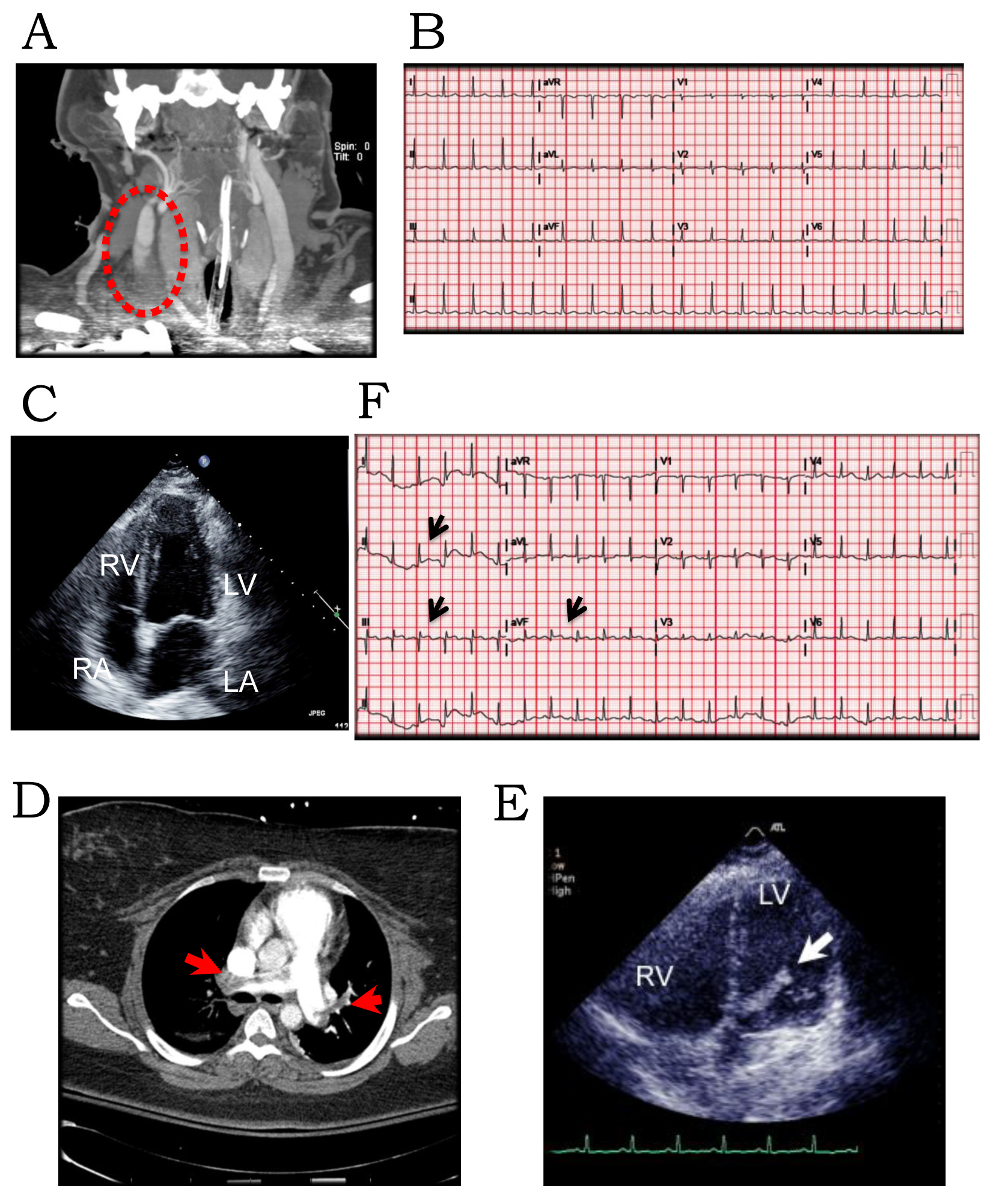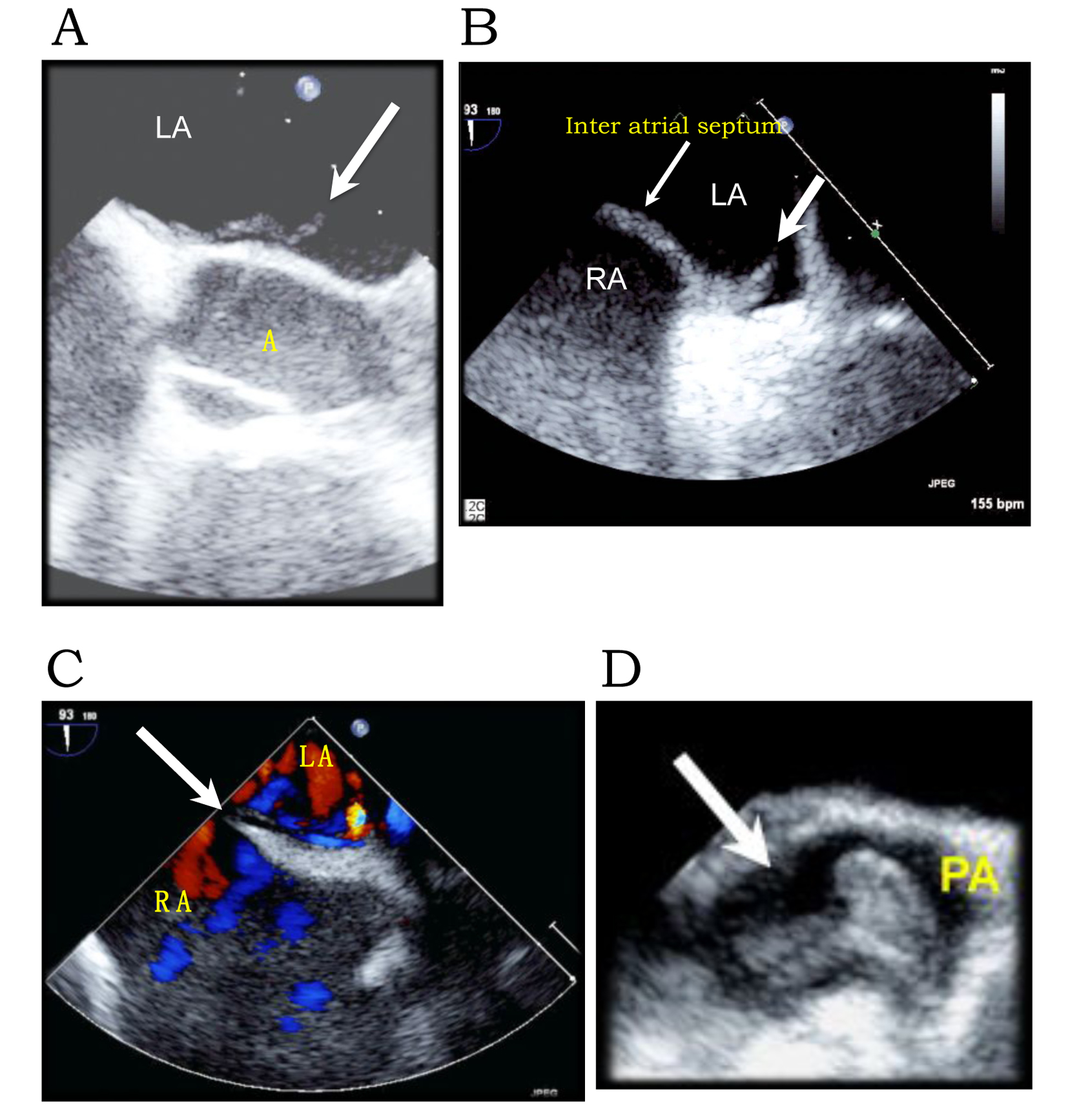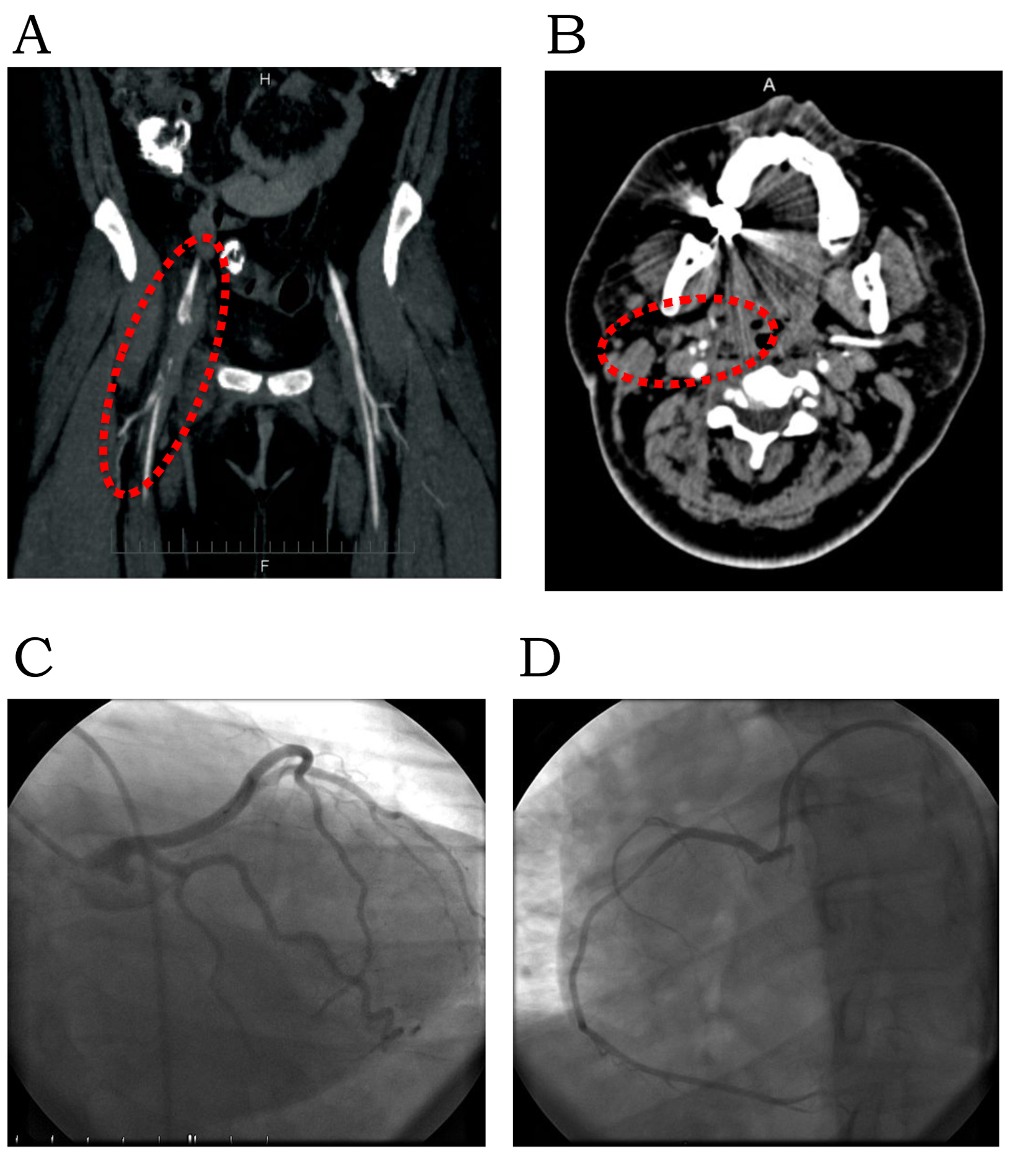
Figure 1. (A) CT angiogram of head and neck demonstrating the right internal jugular vein thrombus. (B) Baseline EKG in normal sinus rhythm no ST-T changes. (C) Transthoracic ECHO 4-chamber view of the heart with no thrombus during first hospitalization. (D) CT PE protocol revealing emboli in right and left PAs (arrows). (E) Transthoracic ECHO 4-chamber view of the heart revealing thrombus in the LV cavity extending across the mitral valve with point of origin in the LA (arrow). (F) EKG demonstrating ST elevation in II, III and aVF.

